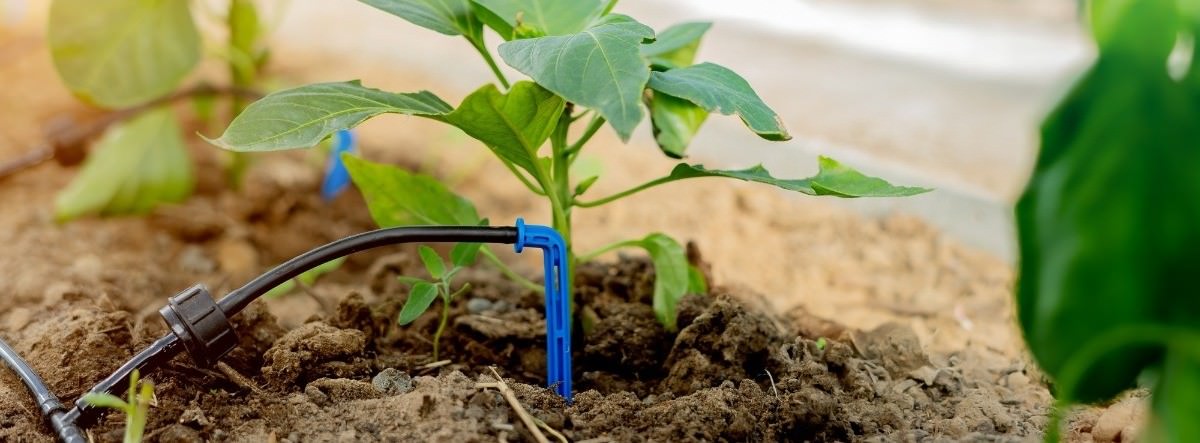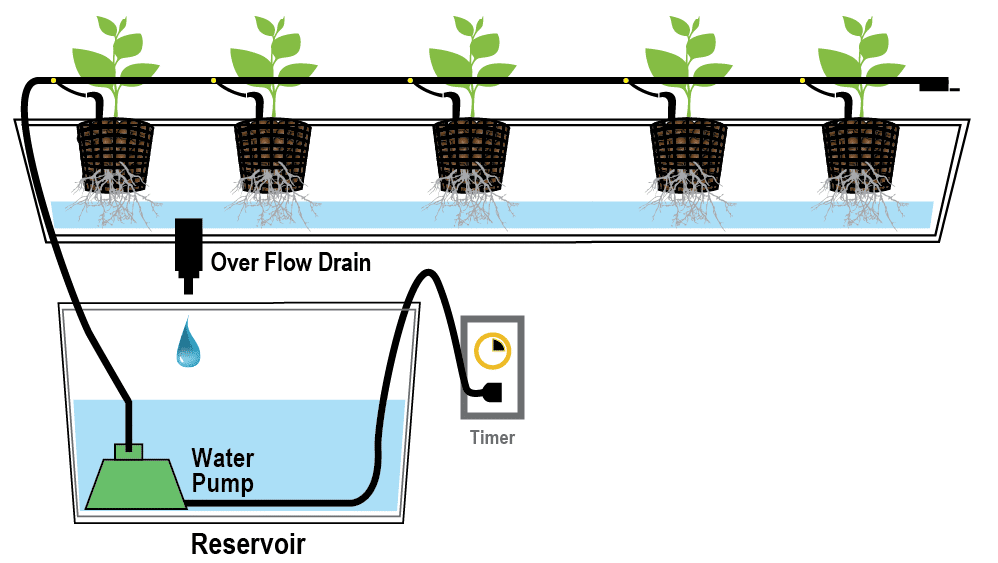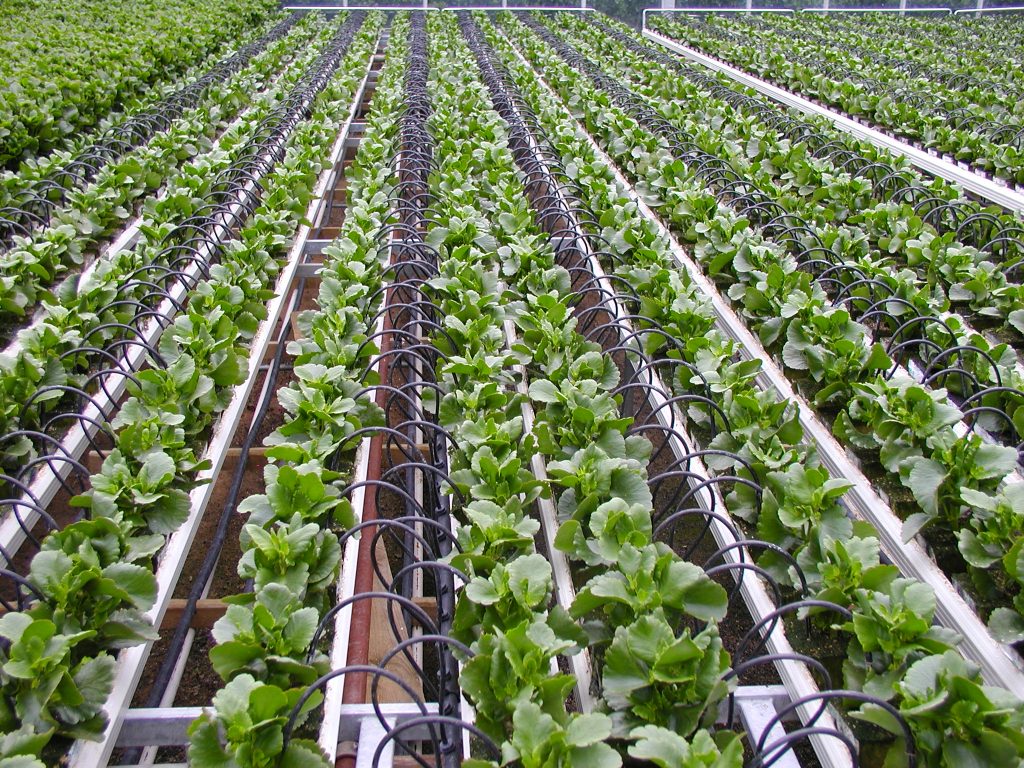Imagine transforming your garden into a thriving oasis with minimal water usage. How?
With trickle irrigation, a technique that might just revolutionize the way you nurture your plants. Have you ever wondered why some gardens flourish even in dry seasons while others struggle? The secret often lies in the efficient delivery of water directly to the roots.
Trickle irrigation, also known as drip irrigation, offers a precision that traditional methods can’t match. By the end of this article, you’ll understand how this system can make your garden more resilient, save you time, and conserve precious resources. Curious about how to harness this innovative method for your own green space? Let’s dive into the details and explore the magic behind trickle irrigation.

Credit: www.agrivi.com
Trickle Irrigation Basics
Trickle irrigation, often referred to as drip irrigation, is a method that delivers water directly to the roots of plants. This technique is efficient, conserves water, and promotes healthier plant growth. Understanding the basics of trickle irrigation can transform your gardening or farming practices, making them more sustainable and productive.
How Trickle Irrigation Works
Trickle irrigation operates through a network of tubes and emitters. These components distribute water slowly and steadily to individual plants. You control the flow, ensuring each plant gets exactly what it needs.
Imagine watering your garden with precision. Each plant receives water without wastage, directly targeting the roots. This minimizes evaporation and runoff, preserving water resources.
Components Of Trickle Irrigation
The system is simple but effective. It includes a mainline, laterals, and emitters. The mainline connects to your water source, while laterals branch out to different areas. Emitters are the final contact point, dripping water directly to the plant base.
Think of emitters as the gentle hand guiding the water to where it’s most needed. They come in various types, allowing you to customize the flow rate based on plant requirements.
Advantages Of Trickle Irrigation
Why choose trickle irrigation? It saves water, reduces weed growth, and minimizes disease spread. By delivering water directly to roots, you avoid watering leaves and stems, which can cause fungal issues.
Consider the impact on your water bill and the environment. With trickle irrigation, you use less water, which means lower costs and a smaller environmental footprint.
Setting Up Your Trickle Irrigation System
Setting up is straightforward. Start by mapping your garden or farm layout. Identify water source points, and plan tubing routes. Select emitters based on plant types and water needs.
Do you enjoy DIY projects? Setting up a trickle irrigation system can be a satisfying venture. It’s an investment in your garden’s future health and productivity.
Maintenance Tips For Trickle Irrigation
Maintenance is key to longevity. Regularly check for clogs in emitters and leaks in tubing. Keeping the system clean ensures efficiency and reliability.
Have you ever noticed uneven plant growth? It might be due to a clogged emitter. A quick check can prevent water distribution issues, ensuring all plants thrive.
Is trickle irrigation right for you? Consider your water usage, plant types, and climate. Could this method be the solution to your irrigation challenges?
Components Of Trickle Irrigation
Trickle irrigation involves several components, ensuring efficient water delivery. These include emitters that control flow, tubing that transports water, and filters that remove debris. Each piece works together to distribute water directly to plant roots, minimizing waste and maximizing growth.
Trickle irrigation, also known as drip irrigation, is a smart solution for water conservation in agriculture and gardening. It involves delivering water directly to the base of plants, minimizing waste and evaporation. Understanding the components of trickle irrigation is crucial to maximizing its effectiveness and ensuring your plants receive the right amount of water. Let’s dive into the essential components that make this system work efficiently.Emitters
Emitters are the small devices that control the flow of water to each plant. They are the heart of your trickle irrigation system. By releasing water slowly, emitters ensure plants receive a steady supply without waterlogging the soil. Different plants require different amounts of water. Choose emitters based on the specific needs of your plants. Adjustable emitters offer flexibility, allowing you to modify the flow as your garden grows.Tubing And Pipes
Tubing and pipes are the veins of your irrigation system. They transport water from the source to the emitters. Made from durable materials like polyethylene, they are designed to withstand outdoor conditions. Consider the layout of your garden. Arrange the tubing and pipes to ensure even water distribution. Remember, a well-laid network minimizes leaks and maintains consistent pressure.Filters
Filters play a crucial role in maintaining the efficiency of your system. They prevent debris and particles from clogging the emitters, ensuring a smooth water flow. Clean filters are essential for the longevity of your irrigation system. Regular maintenance is key. Check filters frequently to avoid blockages. If you’ve ever experienced a clogged kitchen sink, you know how frustrating it can be; the same applies to your irrigation system.Pressure Regulators
Pressure regulators ensure that water pressure remains consistent throughout the system. Without them, your emitters could release too much or too little water. Consistent pressure is crucial for the health of your plants. Think about your water source. If you have high water pressure, a regulator will prevent damage to your system. It’s like having a thermostat for your water flow, keeping everything balanced. Understanding these components and how they work together can transform the way you water your plants. Have you considered upgrading your current setup? With trickle irrigation, you’re not just watering your plants; you’re investing in a sustainable future for your garden.Installation Process
Trickle irrigation involves installing a system that delivers water directly to plant roots. Place emitters near plants, ensuring efficient water use. Connect tubing to a water source, and adjust flow rates for optimal plant hydration.
The installation process of trickle irrigation might seem daunting at first, but breaking it down into manageable steps makes it far more approachable. This method of irrigation is not only efficient but can be tailored specifically to your garden or field. Let’s dive into the necessary steps to ensure your system is set up for success.Site Assessment
Before laying down any pipes, assess your site thoroughly. Check the soil type and determine water requirements for your plants. This will help you decide how much water needs to be delivered and the best layout for your trickle irrigation. Walk around your garden or field and note areas that might need more water than others. Consider factors like sun exposure and plant type. Do you have a slope? Water might pool at the bottom, affecting the distribution.System Design
Once you’ve assessed the site, move on to designing your system. Think about the water source and how it will connect to the system. Will you use a timer for automated watering? This can save you time and ensure consistent watering. Sketch a simple map of your garden. Mark where the main line and drip lines will go. Keep in mind, shorter lines maintain better water pressure and efficiency.Component Assembly
With a design in place, gather your components. These typically include a main line, drip lines, emitters, connectors, and a filter. Ensure you have everything before starting assembly. Begin with the main line and attach the drip lines using connectors. Don’t forget to add a filter if your water source has debris. This step might remind you of assembling a simple puzzle, where each piece has its perfect spot.Testing And Adjustments
After assembling, it’s crucial to test the system. Turn on the water and check each emitter. Are they delivering water evenly? Adjust the pressure or reposition emitters as necessary. Observe the system over a few days. Adjust timers or add additional emitters if certain areas look dry. This step is a chance to fine-tune and ensure your setup is perfect. Does the idea of trickle irrigation installation still sound overwhelming, or do you feel ready to tackle this project? Remember, the key is to start small and make adjustments as you go.Benefits Of Trickle Irrigation
Trickle irrigation, also known as drip irrigation, has transformed the way we water our plants. By delivering water directly to the roots, this method minimizes waste and maximizes efficiency. But what makes trickle irrigation truly remarkable is the array of benefits it offers. Whether you’re a seasoned gardener or just starting out, understanding these advantages can help you cultivate a thriving garden while conserving resources.
Water Conservation
Water is a precious resource, and trickle irrigation helps you use it wisely. This system delivers water directly to the plant roots, significantly reducing evaporation compared to traditional methods. Imagine saving up to 50% of water, which is not just a boon for your garden but also lightens your water bills. It’s a smart choice for anyone keen on sustainability.
Enhanced Plant Growth
Healthy plants mean a happy gardener. Trickle irrigation ensures that each plant receives the right amount of water, reducing stress and promoting robust growth. Consistent moisture levels lead to better nutrient uptake, resulting in lush foliage and abundant blooms. Picture your garden flourishing as each plant reaches its full potential.
Reduced Weed Growth
Weeds can be a gardener’s nightmare, but trickle irrigation can keep them at bay. By targeting water delivery, you minimize moisture in areas between plants where weeds typically thrive. This means less time spent on weeding and more time enjoying your garden. Have you noticed how fewer weeds equal a more pleasant gardening experience?
Incorporating trickle irrigation into your gardening routine can be a game-changer. As you consider these benefits, think about how they might apply to your own garden. Could adopting this method enhance your gardening efforts and lead to a more sustainable future? The choice is yours, and the results could be stunning.
Challenges And Solutions
Trickle irrigation is a water-saving technique used in agriculture. It delivers water directly to plant roots. Despite its benefits, trickle irrigation faces challenges. These challenges can affect efficiency and costs. Understanding these challenges and their solutions is crucial for effective irrigation.
Clogging Issues
Clogging is a common problem in trickle irrigation systems. It occurs due to debris or mineral buildup. Clogged emitters reduce water flow. Regular maintenance can prevent clogging. Flushing the system keeps it clean. Filters are essential to block debris. Clean water sources also help prevent blockages.
Initial Costs
Setting up trickle irrigation requires investment. High initial costs can deter farmers. Costs include pipes, emitters, and installation. Over time, savings on water reduce total expenses. Government grants may offset initial costs. Long-term benefits often outweigh the initial investment.
Maintenance Requirements
Trickle irrigation systems need regular maintenance. This ensures efficient water distribution. Checking for leaks is essential. Replacing damaged parts prevents water loss. Routine inspections help identify issues early. Proper maintenance extends system life. It also ensures optimal plant growth.

Credit: ai.thestempedia.com
Best Practices
Trickle irrigation, also known as drip irrigation, conserves water by delivering it directly to plant roots. This method reduces water waste and promotes healthy plant growth. Perfect for gardens and farms, it ensures efficient water use and minimizes evaporation.
When it comes to making the most of your trickle irrigation system, following best practices ensures efficiency, longevity, and optimal plant growth. Think of your garden as an investment; nurturing it requires attention and care. Implementing these practices not only enhances system performance but also conserves water, saving you money and benefiting the environment. Let’s dig into some essential practices to keep your trickle irrigation system in top shape.Regular Maintenance
Regular maintenance is key to a healthy irrigation system. Check your emitters and hoses for clogs or leaks. A simple cleaning can prevent bigger problems down the line. Keep an eye on the water pressure. Too high or too low can affect the distribution. Adjust it as necessary for even coverage. Take some time every few months to inspect the filters. Clean or replace them to ensure smooth water flow. This small step can make a big difference.Optimal Scheduling
Scheduling your irrigation system at the right times is crucial. Early mornings or late evenings are ideal to minimize evaporation. Monitor weather patterns. If rain is on the forecast, adjust your schedule accordingly to prevent overwatering. Consider the needs of different plants. Some may require more frequent watering than others. Tailor your schedule to meet these specific needs.System Upgrades
Technology is your friend. Upgrading to a smart irrigation controller can enhance efficiency. These devices adjust watering based on weather conditions. Add sensors to detect soil moisture. This ensures your plants get the right amount of water without wastage. If your system is old, replacing parts might be necessary. Newer models are often more efficient and cost-effective. Have you thought about the impact of water conservation on your garden and wallet? By implementing these best practices, you’re not only enhancing your garden’s beauty but also contributing to a sustainable future. Keep learning, stay curious, and watch your garden thrive!Applications In Agriculture
Trickle irrigation delivers water directly to plant roots, minimizing waste and promoting efficient water use. This method involves slow, precise water drips, ideal for conserving resources in agriculture. Farmers benefit from better crop yields and reduced water consumption, making it an essential practice in sustainable farming.
Trickle irrigation, also known as drip irrigation, is a method of watering plants that delivers water directly to the root zone. This system reduces water waste and enhances plant growth. Its applications in agriculture are diverse and beneficial, making it a popular choice among farmers.Crop Suitability
Trickle irrigation suits many crops, from vegetables to grains. It provides precise moisture levels needed for optimal growth. Farmers can adjust water delivery to meet specific crop needs. This flexibility helps improve crop yield and quality.Greenhouse Use
Greenhouses benefit significantly from trickle irrigation. It delivers water efficiently in controlled environments. This system reduces humidity, preventing plant diseases. It ensures each plant receives equal watering. Thus, it supports uniform growth.Orchards And Vineyards
Orchards and vineyards thrive with trickle irrigation. It provides deep root watering crucial for fruit-bearing trees. The system conserves water in large-scale operations. It prevents water runoff and reduces soil erosion. This leads to healthier plants and better fruit production.
Credit: www.swansonsnursery.com
Frequently Asked Questions
How Does Trickle Irrigation Work?
Trickle irrigation delivers water directly to plant roots using a network of tubes and emitters. This method conserves water and reduces evaporation. It ensures precise water delivery, promoting efficient plant growth. Ideal for gardens, farms, and landscaping, trickle irrigation supports sustainable agriculture and enhances crop yield.
What Is The Trickle System Of Irrigation?
The trickle system of irrigation, also known as drip irrigation, delivers water directly to plant roots. It minimizes water wastage and evaporation by using a network of valves, pipes, and emitters. This method enhances water efficiency, promotes healthy plant growth, and is ideal for arid regions or water conservation.
What Is The Meaning Of Trickle Irrigation?
Trickle irrigation delivers water directly to plant roots using small emitters. It conserves water and improves plant growth. This efficient method reduces evaporation and runoff, enhancing nutrient absorption. Ideal for gardens, farms, and landscapes, trickle irrigation optimizes water usage and supports sustainable agriculture practices.
Do You Leave Drip Irrigation On All The Time?
No, don’t leave drip irrigation on all the time. Schedule it based on plant needs and soil moisture. This prevents overwatering and conserves water. Adjust timing seasonally to ensure optimal plant health and growth. Regularly check for leaks and clogs to maintain system efficiency.
Conclusion
Trickle irrigation offers precise water delivery. Plants get water directly at roots. This system saves water and reduces waste. It’s perfect for areas with limited water. Farmers find it cost-effective and efficient. No complex setup required. Easy to maintain over time.
Suitable for small and large farms. Helps improve crop yield. Environmental impact is minimal. Less soil erosion. Healthier plants. Boosts growth without excess water. Consider trickle irrigation for sustainable farming practices. Maximize water use. Enhance productivity. Reduce water bills. A smart choice for modern agriculture.
